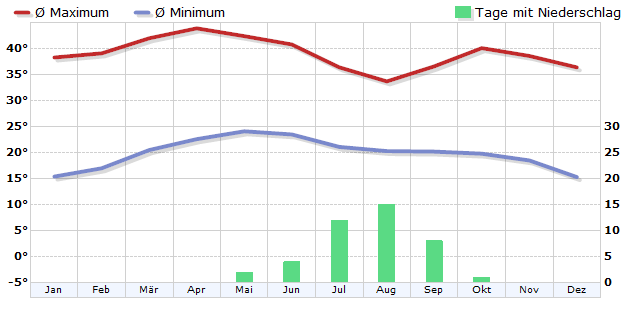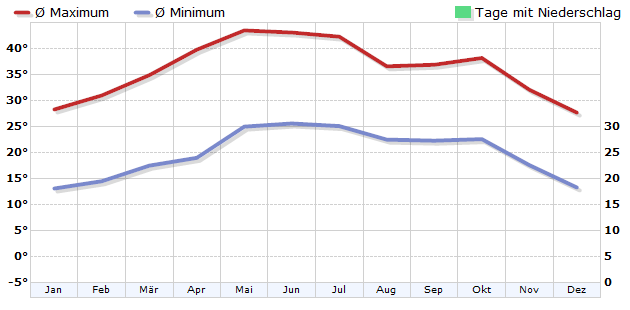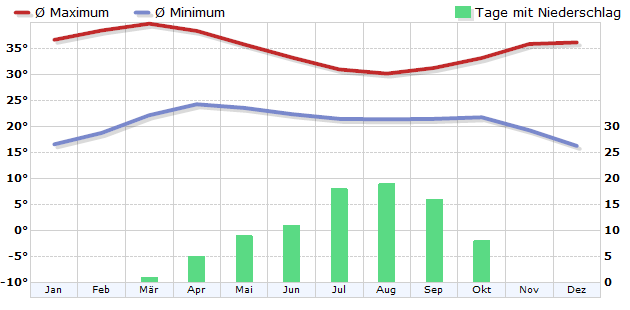Climate Chad
Chad lies in the outer tropical zone of northern equatorial Africa. The northern half of the country and the high Tibesti massif have a dry, hot desert climate, while the southern parts of the country have steppe and savannah climates with clearly defined rain and dry seasons.
The rainy season begins in the south at the beginning of May and shifts to the north by about two months. During this time, heavy thunderstorms mainly occur in the afternoon or at night. If it rains, the month with the most rain is August. The change from the rainy to the dry season, beginning in the north of the country, takes place in the months September to October/November. The annual amount of rain varies greatly (sometimes it doesn't rain at all)
During the dry season, sandstorms occur in the northern parts of Chad. These sand and dust storms also regularly reach N'Djamena at only slightly milder speeds.
The average daytime temperatures in Chad are between 200 and 500 m at 30°C, while the winter months in the north are a few degrees lower. Before the beginning of the rainy season the temperature rises to 40°C and more. In N'Djamena the dry season lasts from November to March, the rainy season from June to September, the warmest month is May with midday temperatures above 40°C, the coolest months are December with an average of 24°C and August with an average of 26°C. The humidity is usually high during the rainy season.
The best time to travel is during the dry season from December to mid-February.





